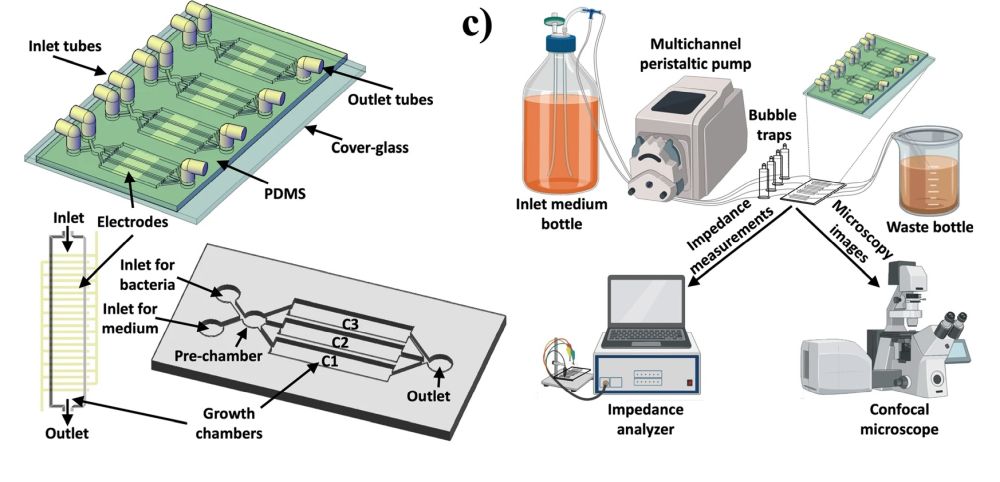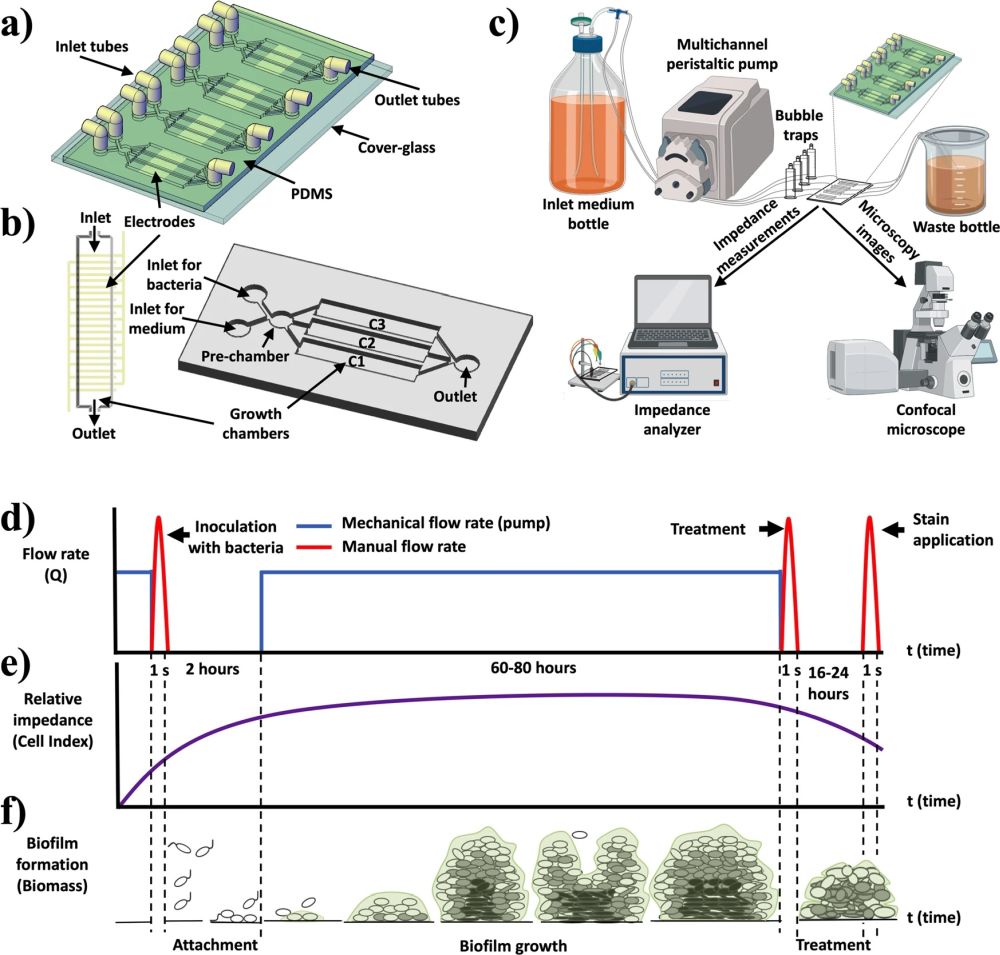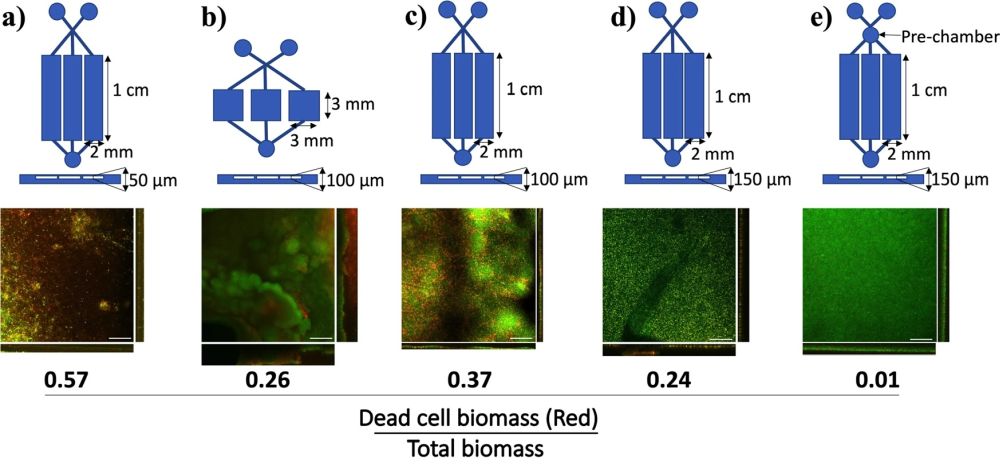
06 Aug Microfluidic device for biofilm formation and antibiotic susceptibility testing
Biofilms are complex consortiums of microbiomes that can adhere to each other and to surfaces. Biofilms can develop a shield against antibiotics and the host immune systems and thus can be very challenging to treat. A research group from Spain has now developed a microfluidic device that can form multiple biofilms in parallel microchannels and can be used for rapid studying of anti biofouling strategies.
Abstract
“Currently, three major circumstances threaten the management of bacterial infections: increasing antimicrobial resistance, expansion of chronic biofilm-associated infections, and lack of an appropriate approach to treat them. To date, the development of accelerated drug susceptibility testing of biofilms and of new antibiofouling systems has not been achieved despite the availability of different methodologies. There is a need for easy-to-use methods of testing the antibiotic susceptibility of bacteria that form biofilms and for screening new possible antibiofilm strategies. Herein, we present a microfluidic platform with an integrated interdigitated sensor (BiofilmChip). This new device allows an irreversible and homogeneous attachment of bacterial cells of clinical origin, even directly from clinical specimens, and the biofilms grown can be monitored by confocal microscopy or electrical impedance spectroscopy. The device proved to be suitable to study polymicrobial communities, as well as to measure the effect of antimicrobials on biofilms without introducing disturbances due to manipulation, thus better mimicking real-life clinical situations. Our results demonstrate that BiofilmChip is a straightforward tool for antimicrobial biofilm susceptibility testing that could be easily implemented in routine clinical laboratories.”

Reproduced under Creative Commons Attribution 4.0 International License. Blanco-Cabra et al., NPJ Biofilms Microbiomes, 2021.
Working mechanism of the microfluidic device
The microfluidic chip for biofilm growth and analysis is microfabricated using PDMS and consists of two inlets connected to a pre-chamber which in turn is linked to three separate microchannels. The bacteria is introduced through one of the inlets and is given time to adhere to the surface. The other inlet is then used to introduce the culture medium to the microfluidic chip. The pre-chamber is designed to prevent fluctuations and stabilize the flow. The straight microchannels are placed on top of gold electrodes connected to an impedance analyzer to investigate the biofilm formation and response to drugs. Various microchannel dimensions and thicknesses (50-150 µm) were microfabricated to find the optimal condition for biofilm growth. The proposed microfluidic device was shown to be capable of forming biofilms in the microchannels successfully. PDMS is transparent thus the biofilm could simply be analyzed using confocal microscopy. It was demonstrated that the impedance measurements could be correlated to the confocal microscopy results which makes the data acquisition and analysis much simpler compared to microscopy.

Reproduced under Creative Commons Attribution 4.0 International License. Blanco-Cabra et al., NPJ Biofilms Microbiomes, 2021.
“We proposed an innovative rapid method for studying new antibiofouling strategies, including drug susceptibility testing of different bacterial species using EIS. This microfluidic platform allows homogeneous biofilm growth that can be easily monitored without using a confocal microscope and enables the development and co-culture of polymicrobial biofilms that resemble the real biofilm infections found in complex matrixes such as sputum samples (e.g., cystic fibrosis infections).”
Read the original article: A new BiofilmChip device for testing biofilm formation and antibiotic susceptibility

Pouriya Bayat
Pouriya is a microfluidic production engineer at uFluidix. He received his B.Sc. and M.A.Sc. both in Mechanical Engineering from Isfahan University of Technology and York University, respectively. During his master's studies, he had the chance to learn the foundations of microfluidic technology at ACUTE Lab where he focused on designing microfluidic platforms for cell washing and isolation. Upon graduation, he joined uFluidix to even further enjoy designing, manufacturing, and experimenting with microfluidic chips. In his free time, you might find him reading a psychology/philosophy/fantasy book while refilling his coffee every half an hour. Is there a must-read book in your mind, do not hesitate to hit him up with your to-read list.


